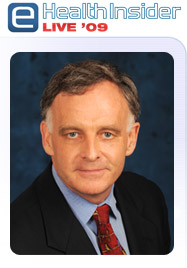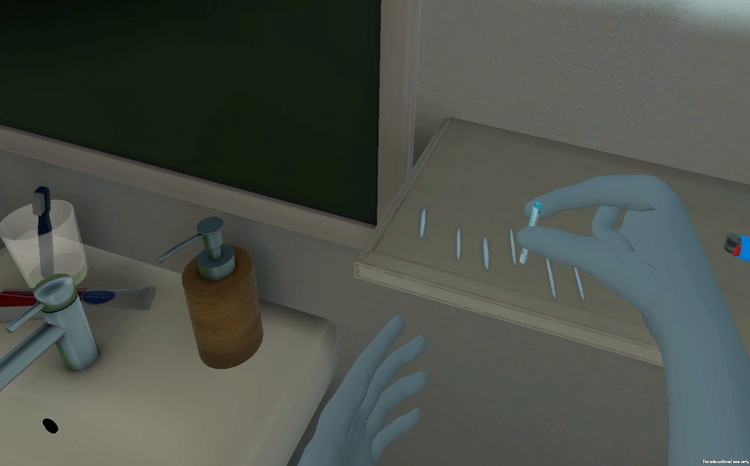Vet centre
- 12 October 2009
 |
|
Adam Darkins |
Dr Adam Darkins, chief consultant for care co-ordination and telehealth at the US Veterans Health Administration, will be appearing via video link at E-Health Insider Live ’09. Ahead of the event, he talks to EHI’s US correspondent, Neil Versel, about its experience of telehealth and how it can re-engineer care.
As in other post-industrial societies, the population of the US is aging rapidly and growing sicker at the same time. How rapidly?
The Veterans Health Administration, the segment of the US Department of Veterans Affairs that cares for more than 5.5m ex-military personnel, expects the number of patients 85 or older to triple between 2000 and 2011.
To co-ordinate the care of veterans with chronic illnesses, allow more patients to live independently and avoid costly, unnecessary hospital admissions and long-term, institutional care, the VA began an enterprise-wide telehealth programme in 2003.
“It’s really a routine part of doing care,” says Dr Adam Darkins, the VA’s chief consultant for care co-ordination and telehealth, who adds that telehealth has been part of the VA for more than three decades.
Build and use
The VA ran its first tele-mental health pilot in 1977. For 22 years after that, VA telehealth programmes mostly operated in isolation, without any central strategy.
Then, starting in 1999, the VA took an organisational view of all its technology programmes, to leverage its scale as a large government agency. In 2003, it then rolled out three enterprise-wide programmes: home telehealth, clinical videoconferencing and store-and-forward telemedicine.
“We take a systematic approach to everything,” explains Darkins, who will appear via video link at E-Health Insider Live ’09 on 10 November. “You build large networks by looking for high-volume applications.”
Other organisations tend to have low-volume, high-cost set-ups for telehealth – though broadband Internet has brought the cost down to an extent. “It’s like building a pyramid from the top down,” Darkins quips. At the VA, they like to do things the other way around: build the foundations and then add more features later.
Interestingly, the VA consciously chose the term “telehealth” over “telemedicine” because the former suggests something broader than direct physician care. “It’s much more egalitarian than just being about physicians,” Darkins says.
That said, VA physicians have an advantage over their peers in the private sector when it comes to remote care.
Because it is an arm of the US government, the VA is exempt from state laws, which, in many cases, require doctors to be licensed to practice medicine in the state where the patient is physically located.
Free from that restriction, doctors on the federal payroll can see any patient via telehealth, regardless of the patient’s location.
Ramped up rapidly
Participation in all three modes of telehealth have taken off in the six years since the enterprise programme began. In 2003, about 3,000 patients in the continental US received home telehealth care from the VA – a number that jumped to 40,000 in fiscal year 2009, which ended 30 September. “We’re on track to go to 75,000 home patients by 2011,” Darkins says.
Today, VA home telehealth is mostly via telephone consultation, with some devices in use to monitor things such as blood glucose levels. But the organisation wants to move toward more mobility, with wireless monitors and readings delivered automatically over cellular and Internet connections.
The second flavour of VA telehealth, clinical videoconferencing, generally links outpatient clinics with hospital-based specialists; part of a decade-old organisational strategy of shifting acute care to less-costly ambulatory environments whenever practical. VA clinicians treated 263,000 people this way for fiscal 2009.
Currently, 140 of the organisation’s 153 hospitals and about 400 community clinics have videoconferencing technology for telehealth, mainly for mental health and rehabilitation services, according to Darkins.
The VA uses store-and-forward telehealth technology mainly for screening for retinal diabetic care and for teledermatology. The VA accelerated implementation of this service in 2006, going from 9,000 patients in 2005 to 160,000 cases in the fiscal year just concluded. It’s now available at nearly 250 sites.
“Each of these areas is ramped up very quickly,” says Darkins, noting that the VA likes to take enterprise-wide views of its capabilities and services after building out the basic infrastructure.
Each mode of telehealth has its own training centre, though most staff training takes place over the network. “The VA has an employee education system,” Darkins explains. This system provides content and dedicated training to 18,000 computer desktops throughout VHA institutions.
There are satellite broadcasts across this network every two months and an annual virtual conference, as well as specialised training for services like telehealth as needed.
Last year, the VA trained 1,600 staff for home telehealth, 96% of whom received their training remotely over the agency’s vast electronic infrastructure. More than 1,000 employees have been trained on the clinical videoconferencing equipment, 90% of them remotely.
As store-and-forward services are more labour-intensive than the other two areas, only 178 people have been trained in this area, and a relatively low 60% of training takes place virtually, Darkins says.
A new way of doing care
The network uses IP video with direct connections between centres that don’t require a bridge. “We can begin to think about a national network,” says Darkins. The VA also is developing a national tele-mental health centre and piloting a system called the Clinical Enterprise Videoconferencing Network as an extension to the existing Polytrauma Telehealth Network.
Darkins explained this pilot project to a congressional committee: “The [network] will facilitate the extension of polytrauma, post-amputation, spinal cord injury care and specialist mental health care to rural areas,” he said.
During that testimony, Darkins said that telehealth is only one aspect of health IT efforts within the VA, specifically mentioning My HealtheVet, a web portal that affords patients secure, anytime access to their personal health records.
While speaking with E-Health Insider, Darkins continues the theme, noting that the Veterans Health Information Systems and Technology Architecture electronic health record, commonly known as VistA, is the underpinning of all information technology at the VHA.
“You could essentially see telehealth as a multimedia patient record,” Darkins says. “It allows you to change the location of the decision-making. You get these islands of patient records when you see people in clinics or hospitals. Add the home as a care setting and the information becomes more longitudinal. This is a re-engineering of care.”
|
Dr Adam Darkins will be speaking via video link at E-Health Insider Live ’09 on 10 November. E-Health Insider Live ’09 is the essential, two day exhibition and conference at The ICC in Birmingham. ore than 60 exhibitors are booked for the exhibition, which also features a free best practice showcase. The exciting conference programme, whose principal sponsor is BT, has four streams exploring “the big picture” on healthcare IM&T, benefits realisation, digital patient care and healthcare interoperability. And there’s no need to be stuck in your hotel overnight, because E-Health Insider has organised a great comedy night at Jongleurs, which should be a fantastic entertainment and networking opportunity. Register now. |




